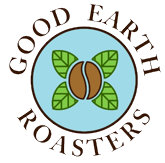The Science Behind Caffeine Content

I’ve heard the question a number of times recently, “Which has more caffeine, dark or light roast? I’ve heard light.” Yet common sense seems to lean toward dark coffees having more caffeine. Who’s right?
The answer? It depends.
Let me throw some facts at you.
- Caffeine is very stable throughout the roasting process. So bean for bean with a light roast vs a dark roast of the same coffee, the beans will each have a very similar percentage of caffeine.
- Beans expand during the roasting process as cell walls break, moisture (around 90% of their water content) escapes, and the bean hardens. Darker beans (roasted longer) are less dense, or lighter.
So what do we have? All of those beans will have pretty much the same caffeine content. And how much gets into your cup depends entirely on how you measure your coffee because for a given bean volume (say one level cup), that cup will contain more lightly roasted (smaller, denser) beans than a cup of dark roasted (larger, lighter) beans.
So, if you measure your beans by the scoop, then a scoop of light roast coffee will contain more beans (and thus caffeine) than a scoop of dark roast coffee.
However, if you measure your beans by weight, then the dark roast’s lower density means a given weight of dark roast beans will contain more beans (and thus more caffeine) than the same weight of light roast.
So that's the "it depends" answer.
Any other factors? Yes, but all pretty minor. Arabica beans (all Good Earth Roasters coffee is 100% arabica) vary somewhat in caffeine content depending on the coffee plant species. That information’s fairly difficult for us to obtain, so practically we assume an average caffeine level across all arabica beans.
Caffeine molecules are denatured (break apart) at 235°C. We typically pull our beans somewhere between 200 and 225°C, but a very dark roast – an French, Italian or Spanish roast – will heat the beans to as much as 249°C, where much of the caffeine is burned off. So for very dark roasts, the caffeine level is always lower. One study showed the caffeine content of light roast to be 1.13%, while dark roast was 1.08%. Not much difference there.
Also, robusta beans, which have more of a harsh and earthy taste, have about twice the caffeine level of arabica beans - 1.7-4%, vs .8-1.4%. Sometimes robusta is added to espresso blends for this reason, and because of it's strong, intense flavor, and a better crema. We only sell arabica beans, so you can ignore this difference when brewing our coffees.
How particular do you want to be? I always weigh out 20grams of coffee for one pourover mug, and find that a very light roast is usually more caffeinated. But if you're using a tablespoon to measure for a pot, what if you scoop out just a little more or less coffee into your filter? Or toss the last mouthful of cold coffee in your cup? That would perhaps have a greater effect on the caffeine content of your morning brew than other factors.
My advice: Not stimulating enough? Have another cup.
